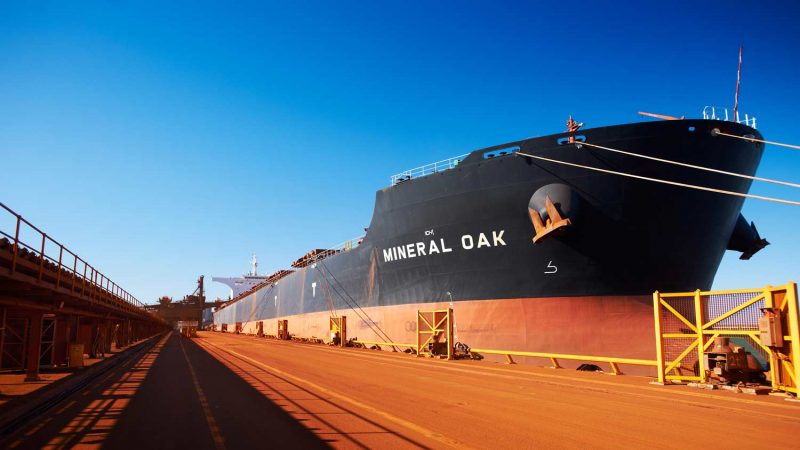Russell: Rising iron ore supply may cool prices where China jawboning fails

(The opinions expressed here are those of the author, Clyde Russell, a columnist for Reuters.)
China’s seaborne imports of iron ore are likely to have edged higher in May, helping to address the problem Beijing faces in trying to control rising prices in an environment of strong demand for the steel-making ingredient.
About 89.8 million tonnes of iron ore was discharged at Chinese ports in May, according to preliminary figures compiled by Refinitiv from vessel-tracking and port data. The final May figure may be higher given some cargoes may still be assessed as having been offloaded in the month.
This was up slightly from the 87.46 million tonnes imported via ships in April, according to the Refinitiv data.
China’s steel output hit a record 97.85 million tonnes in April, up 4.1% from March
It’s also worth noting that the seaborne tracking figures don’t align perfectly with official customs data given differences in when cargoes are assessed as having been discharged, and that the official numbers include iron ore transported overland from neighbouring countries.
Nonetheless, it seems likely that China’s robust appetite for iron ore continued in May as the world’s second-biggest economy rebounds from the impact of the coronavirus pandemic, assisted by stimulus measures that have boosted steel-intensive industries such as construction, infrastructure and manufacturing.
The problem for Beijing authorities is that iron ore prices have remained at historically high levels despite the official efforts to take some of the heat out of the market.
The price of benchmark spot 62% iron ore for delivery to north China as assessed by commodity price reporting agency Argus, has recovered in recent sessions, ending Monday at $199.50 a tonne.
This was up from the recent low of $188.55 a tonne, reached on May 27 after several moves by the authorities to lower prices, including raising the costs of trading on China’s domestic exchanges, and threats of price-control measures and more market oversight.
The official measures did enjoy some initial success in lowering prices, with spot iron ore retreating from an all-time high of $235.55 a tonne, reached on May 12.
But while a 15.3% decline from the record high may look impressive, it pales in comparison to the almost threefold gain from the 2020 low of $79.60 a tonne, reached in March of that year at the height of the lockdowns across much of China as the government battled to contain the coronavirus outbreak.

Supply hopes
Iron ore has surged through a combination of strong demand from China, which buys about 70% of the global seaborne volume, and constraints in supply, mainly from adverse weather in top shipper Australia and coronavirus-related disruptions in number two Brazil.
China’s steel output hit a record 97.85 million tonnes in April, up 4.1% from March and some 15% higher than the 85.03 million from April 2020.
Steel production is 16% higher in the first four months of 2021 compared to the same period last year, a figure that stands at odds with official commitments to limit output this year to no more than what was produced in 2020.
There may be some easing in steel output in coming months as profit margins slip for mills given domestic steel prices have dropped by more than iron ore, but as yet there is little evidence of lower production.
On the supply side there is some indication of higher iron ore exports, which may put some downward pressure on prices.
Australia is estimated by Refinitiv to have exported 75.78 million tonnes in May, up from 71.28 million in April, and closer to the 75 million to 80 million range typical in months where weather disruptions aren’t a factor.
Brazil is estimated to have shipped out about 29.1 million tonnes in May, up from 25.76 million in April, and the strongest month since December 2020.
However, Brazil’s May exports are still below what can be achieved, with shipments of between 30 million and 35 million tonnes from August to December last year showing the potential for even more supply.
Overall, what the recent price action in iron ore shows is that China can only expect limited, and short-term, success in trying to drive down prices using measures that do little to cut steel output.
The best chance for lower iron ore prices comes from rising supply, and there are signs this is now being delivered.
(Editing by Tom Hogue)
{{ commodity.name }}
{{ post.title }}
{{ post.date }}

Comments